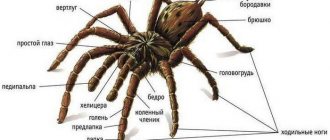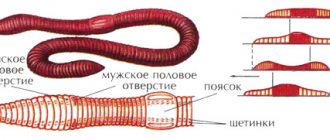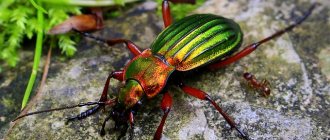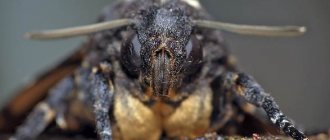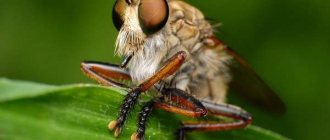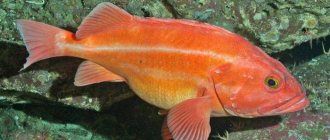Appearance
Amphibians have smooth and delicate skin covered with many mucous glands. The skin allows liquid and air to pass through relatively easily, which is why they have developed the so-called skin respiration.
The lungs are poorly developed, so about half of the necessary oxygen enters the body through the skin. During hibernation, underwater, amphibians breathe through their skin.
The body temperature of amphibians corresponds to the temperature of the external environment; they do not know how to regulate it, as mammals do. Therefore, in the warm season they are active, and with the onset of cold weather or severe drought, they freeze.
The external structure of amphibians is very different. The group of tailed animals, which includes newts and salamanders, resemble lizards in appearance. They grow up to 20 centimeters. Their body is elongated and ends with a long tail. The neck, hind and forelimbs are short. Frogs are tailless amphibians. They have a wide, slightly flattened body and a short neck. The tail is present only at the tadpole stage. Their limbs are elongated and bent, straightening when jumping and swimming (the main methods of movement). The toes of frogs and salamanders are connected by a membrane of skin. Caecilians are amphibians of the “legless” order. Outwardly, they look like worms or snakes. Their sizes range from ten centimeters to a meter. Caecilians have no limbs, and the tail is shortened. Their body is covered with calcareous scales and colored in dark black or brown tones, sometimes with spots or stripes.
Axolotl
These are other amphibious animals whose names almost no one has heard. In the meantime, this is a unique species that does not need to grow up. Axolotls are the larval form of Ambystoma, but they do not need to transition into it to reproduce. They are characterized by neoteny - maturity that occurs in childhood. An axolotl, living in comfortable conditions, may not age at all, but a change in the situation can lead to its transformation into an axolotl. The name is also interesting. Translated from Aztec, it means “water toy,” which is perfect for the smiling face of this amphibian.
Representatives of amphibians
Tritons
Newts feel equally comfortable in water and on land. However, they are looking for places with lush vegetation. In the winter they hibernate and awaken in the spring. At this moment, reproduction begins: newts lay eggs next to aquatic plants. Before the mating season, a special growth forms on the back of males. The diet of these amphibians consists of crustaceans, worms and larvae. Animals that are mostly nocturnal prefer areas with a temperate climate.
frogs
Tailless amphibians such as frogs have lived on our planet since the time of dinosaurs. The structure of their body allows them to live both on land and in water. There are practically no differences between a fish fry and a tadpole, but adult organisms that have gone through the metamorphosis stage are perfectly adapted to life on land. Frogs breathe using their lungs, mouth and skin. Their circulatory system is called universal, since two parts of their heart work in water, and the left atrium pumps blood on land. Frog activity peaks at dusk when the weather is cool. In severe frosts, these amphibious animals try to find shelter, and if they fail to do this, they hibernate at the bottom of the reservoir. Skin color directly depends on the environment. There are green, blue, blue frogs.
Toads
Toads are tailless amphibians. They are quite nasty animals because their body is covered with poisonous glands that can secrete poison. Toads live mostly on land. But they stay close to bodies of water. Many people confuse frogs, tree frogs and toads. However, all these representatives of the amphibian class have distinctive features. For example, toads have shorter hind legs than frogs. Because of this, the length of their jump is only 20 cm. Dry skin is generously strewn with a large number of warts. Toads live in water only during the breeding season; they spend the rest of the time on land. Toads eat insects, worms and shellfish. Therefore, contrary to popular belief, they can be beneficial to humans by destroying slugs in the garden. They are found on all continents, but their population is small in Australia. The territory of this state is inhabited by a species of toad, representatives of which have teeth and are able to accumulate liquid in body cavities.
Tree frogs
In appearance, tree frogs resemble small frogs. Their legs are thin and long, which allows them to balance perfectly on smooth vertical surfaces, jump and swim well. The eyes of tree frogs are very large and expressive. At the ends of the fingers there are small suction cups, with the help of which amphibians cling to branches and various surfaces. The skin on the back is very smooth, on the belly it is coarse-grained. Coloring can be varied. But the common tree frog, which is the most common, is bright green with white or black stripes. The average size of the animal is no more than 5 cm, although larger individuals are found, but they belong to other tree frog species.
Salamanders
Salamanders are quite cute creatures. They are small in size, have an elongated body, 4 legs and a tail - very similar to small lizards. These amphibians are known to people as heroes of mythical stories. Since ancient times, they have been endowed with unique traits, such as immortality, the ability to transform into a dragon, or immunity to fire. Some of these “abilities” have a logical basis: for example, due to the presence of poison, salamanders can pose a danger to humans, as well as other animals.
Worms
Legless amphibians are practically unknown to people far from biology. However, studying them is very interesting. The skin is represented by numerous ring folds, which makes the body look like an earthworm. Some individuals have scales, while others have eyes visible through the skin. One way or another, the worms look very original. These amphibians burrow into moist soil and anthills throughout Africa, South America and Asia. To protect themselves from various kinds of dangers, they use poisonous skin. It turns out that these amazing representatives of the fauna are little known. However, once you see them at least once, you will never forget them.
Blood vessels
The amphibian circulatory system consists of two circles. The small one covers the respiratory organs, the large one passes through all the others. The heart consists of a ventricle and two atria. The right section of the skin and internal organs receive venous blood, and the left section receives arterial blood from the lungs. Only one vessel leads to the latter, which is called the pulmonary vessel.
Both atria contract and push fluid into the common ventricle, where it is mixed. It then supplies tissues, internal organs and the brain. Venous fluid flows through the arteries from the lungs, and almost pure arterial fluid feeds the head. The mixture enters the torso and flows into the aorta from the cardiac ventricle.
The mixing of blood is affected by the special location of the vessels : they leave the heart chamber and fill the closest tissues. After this, the liquid reaches the pulmonary arteries and skin, where it receives the required amount of oxygen. The second portion goes to the rest of the body organs, and the third flows to the most distant vessels and the head.
Order of tailed amphibians
Science knows about 350 species of tailed amphibians. These animals are similar in appearance to lizards, only the skin is soft and completely devoid of scales. Tailed amphibians include newts and salamanders. These animals have an elongated spindle-shaped body, which imperceptibly turns into a long tail. Curving the tail left and right helps it move through the water. On land, amphibians move with the help of two pairs of underdeveloped limbs. The toes may be webbed and lack claws.
Sirens have only forelimbs (Fig. 4).
Top articles : Kromforlander - a family dog that is not easy to get
Rice. 4. Siren
Amphibians that live constantly in water breathe through gills. There is a tongue in the mouth, its shape is varied. There are small teeth. Many tailed animals have the ability to grow a new one if they lose a tail or leg. Amphibians do not know how to chew; they swallow food whole. Amphibians grab everything that moves and do not take stationary food that is completely edible. Tailless amphibians feed on insects, grabbing them in motion using a long sticky tongue. Tailed animals feed on worms and arthropods.
Legless amphibians find food by touch or use their sense of smell. They feed on insect larvae and worms.
The Siberian salamander is one of the few amphibians that is not afraid to live in permafrost conditions (Fig. 5).
Rice. 5. Siberian salamander
The most well-known tailed amphibian is the newt (Fig. 6). They look like little dragons. Newts love to hunt at night.
Rice. 6. Triton
The fire salamander is famous for its bright color (Fig. 7). It is interesting that the shape, size, and pattern on the body of salamanders are unique to each individual.
Rice. 7. Salamander
The axolotl looks like an adult larva (Fig. 8).
Rice. 8. Axolotl
Emergence and evolution
During the Devonian period (400 million years ago), all conditions for the development of land by fish developed on earth. The hot and humid climate and the abundance of food resources allowed lungfish to come ashore. They later evolved into ichthyostegids, which are an evolutionary link between lobe-finned fish and amphibians.
On land, animals change from fins to paws. The gills disappear and lungs form. At the same time, other body systems evolve, which finally leads to the emergence of the amphibian class. In the Carboniferous, an ancient subclass of lepospondyles appears. Amphibians appeared in the Mesozoic. During the process of evolution, animals returned to the aquatic environment more than once and lost limbs. As a result of this, such diversity arose.
Reproductive organs
All amphibians are dioecious. Males have two testes located in the body cavity near the kidneys. The seminiferous tubules, passing through the kidney, flow into the ureter, represented by the Wolffian canal, which serves to excrete urine and sperm. In females, large paired ovaries lie in the body cavity. Ripe eggs exit into the body cavity, from where they enter the funnel-shaped initial sections of the oviduct. Passing through the oviducts, the eggs are covered with a transparent thick mucous membrane. The oviducts open into the cloaca.
Development in amphibians occurs through a complex metamorphosis. The eggs hatch into larvae that differ both in structure and lifestyle from the adults. Amphibian larvae are true aquatic animals. Living in an aquatic environment, they breathe through gills. The gills of the larvae of tailed amphibians are external, branched; In the larvae of tailless amphibians, the gills are initially external, but soon become internal. The circulatory system of amphibian larvae is similar to that of fish and has only one circulation. They have lateral line organs. They move mainly due to the movement of their flattened tail, trimmed with a fin.
When a larva transforms into an adult amphibian, profound changes occur in most organs. Paired five-fingered limbs appear, and in tailless amphibians the tail is reduced. Gill respiration is replaced by pulmonary respiration, and the gills usually disappear. Instead of one circle of blood circulation, two develop: large and small (pulmonary). The Mexican Ambystoma exhibits neoteny—the ability to reproduce at the larval stage, that is, to reach sexual maturity while maintaining larval structural features.
The habitats of amphibians are varied, but most species stick to wet places, and some spend their entire lives in water without going onto land. Tropical amphibians - caecilians - lead an underground lifestyle. A peculiar amphibian, the Balkan proteus lives in the reservoirs of caves; his eyes are reduced, and his skin is devoid of pigment. Amphibians belong to the group of cold-blooded animals, that is, their body temperature is not constant and depends on the ambient temperature. Already at 10°C their movements become sluggish, and at 5-7°C they usually fall into torpor. In winter, in temperate and cold climates, the life activity of amphibians almost stops. Frogs usually spend the winter at the bottom of reservoirs, and newts - in burrows, in moss, under stones.
general information
Amphibians are born in bodies of water. They breathe using gills. For some time after birth, they undergo metamorphosis - the transformation from a tadpole into an adult organism. In this state, amphibians come to land. In total, there are three groups of representatives of this class of organisms.
- Frogs, toads and tree frogs form the first group, which is considered the most numerous. They live in tropical rainforests, cold swamps in the north of the planet and even in semi-deserts.
- Long-tailed: Newts and salamanders, which make up the second group, prefer the cooler climate of the Northern Hemisphere. Their favorite habitats are small shelters under stones and old trees, protecting the animals’ thin skin from drying out.
- Representatives of the third group are often confused with snakes and worms. Amazing organisms called caecilians live in the tropics. They live underground.
Digestive organs
The wide mouth leads into a large oral cavity: many amphibians have small teeth on their jaws and also on the roof of their mouth that help hold prey. Amphibians have tongues of various shapes; in frogs it is attached to the front of the lower jaw and can be thrown out of the mouth; animals use this to catch insects. The internal nostrils, the choanae, open into the oral cavity, and the Eustachian tubes open into the pharynx. In a frog, the eyes take part in swallowing food; Having captured prey with its mouth, the frog, by contracting its muscles, draws its eyes deep into the oral cavity, pushing the food into the esophagus. Through the esophagus, food enters the pouch-shaped stomach, and from there into the relatively short intestine, which is divided into thin and thick sections. At the beginning of the small intestine, bile produced by the liver and pancreatic secretions enter through special ducts. The ureters, bladder duct and genital ducts open into the final part of the large intestine - the cloaca.
Respiratory system
change with the age of the animal. Amphibian larvae breathe through external or internal gills. Adult amphibians develop lungs, although some tailed amphibians retain gills for life. The lungs look like thin-walled elastic bags with folds on the inner surface.
Nervous system
The nervous system and sensory organs of amphibians have remained virtually unchanged over the entire period of evolution. But the brain became a special feature: it grew and developed, now consisting of two hemispheres. And the cerebellum has become smaller, since amphibians do not need to maintain balance while swimming.
Animals have better developed vision : it is necessary for orientation in transparent air. Flat-shaped lenses allow them to see further than river inhabitants. The eyes are covered by eyelids and two membranes. One of them does not move, it covers the mucous membrane from above, and the lower one is dynamic.
Sound vibrations in oxygen do not travel as strongly as under water. Amphibians, in addition to the inner ear, have a middle ear, consisting of a tube with an eardrum. It looks like a thin film on the body and is located behind each eye. Air vibrations enter the middle ear through the auditory ossicle. Pressure changes are not felt as much due to its connection to the oral cavity.
How do amphibians drink?
We now know that, thanks to their skin, amphibians can breathe in water. But it turns out that amphibians can also “drink” with the help of their skin!
Lake frog
All amphibians have thin skin, similar to translucent fabric. It easily passes water with salts dissolved in it, and therefore the water-salt balance of the body is regulated through the skin. If there is a lot of water in the body, then the excess is excreted not only through the kidneys, but also through the skin. If there is not enough water and the frog feels thirsty, it does not have to drink, but it is enough to walk on the grass wet with dew or lie down in a shallow puddle. These unique animals absorb moisture into their bodies like a blotter!
Virulence
The most poisonous vertebrates on Earth belong to the order of tailless amphibians - dart frogs. The poison, which is secreted by the skin glands of amphibians, contains substances that kill bacteria (bactericides). Most amphibians in Russia have poison that is completely harmless to humans. However, many tropical frogs are not so safe.
Best articles: Relief of the earth's surface or topographic relief
The absolute “champion” in toxicity among all vertebrates, including snakes, should be recognized as a resident of the tropical forests of Colombia - a tiny, only 2-3 cm in size, terrible leaf climber (locals call it “cocoi”). Her skin mucus contains batrachotoxin. Indians use the skin of the cocoa tree to make poison for arrows. One frog is enough to poison 50 arrows. 2 mg of purified poison is enough to kill a person. However, this frog has a natural enemy - a small snake Leimadophis epinephelus
, which feeds on young leaf climbers.
Anthracosaurs (amphibians from which reptiles evolved)
| Anthracosaurs (lat. Anthracosauria), or embolomers (lat. Embolomeri) - a group of the most primitive The skull is relatively high, sometimes laterally compressed. The kineticism of the skull is preserved - like in lobe-finned fish - mobility between the “cheeks” and the roof of the skull. There appears to be no tympanic membrane, although there is a notch along the posterior edge of the cheek. The teeth are usually powerful and often have “fangs” on the roof of the mouth. The spine is embolomeric type. The body is elongated, the tail is powerful, laterally compressed. Some are described as having a “caudal fin” of elongated supraneural radials, like those of fish. The limbs of terrestrial forms are short but powerful, while those of aquatic forms are weak. (From Wikipedia) |
Usually the group is limited to 4-5 families that existed from the very beginning of the Carboniferous to the middle of the Permian.
- Family Eoherpetontidae
- Family Anthracosauridae
- Family Proterogyrinidae
- Family Eogyrinidae
- Family Archeriidae or Cricotidae
"Class Amphibians (Amphibians)"
Domain Eukaryotes => Kingdom Animalia => Phylum Chordata => Class Amphibians
These are aquatic and terrestrial animals. They have two pairs of limbs, consisting of three sections.
Sections of the hind limbs:
- hip,
- shin,
- foot.
The hand and foot end with fingers. The reproduction and development of amphibians is associated with the aquatic environment. Amphibians are cold-blooded animals; their metabolic rate depends on the ambient temperature.
Order Tailless amphibians
The order includes frogs and toads. Their body is short and wide, and adult forms lack a tail.
The hind limbs are longer than the front ones and more developed, because serve for repulsion when jumping and swimming. There are swimming membranes between the toes of the hind limbs. The body is divided into head and trunk. The neck is not expressed. On the thickened head there are nostrils that communicate with the oral cavity. Through them, when breathing, air enters the mouth and then into the lungs. The eyes are equipped with movable eyelids. Behind the eyes are the hearing organs, consisting of the middle ear, closed by the eardrum, and the inner ear, the cochlea, in which the auditory receptors are located. There is one auditory ossicle in the middle ear, which amplifies sound many times over.
The skeleton has 6 sections:
- scull,
- spine,
- forelimb belt,
- hind limb belt,
- forelimbs,
- hind limbs.
The moving bones of the skeleton are articulated by joints. The brain part of the skull is small, which indicates poor brain development. The spine is short and consists of the cervical, trunk, sacral and caudal sections. The cervical and crucial sections have only one vertebra, which allows the animals to lower their heads slightly. Limb girdles serve to attach the limbs to the spine and provide mobility. The girdle of the forelimbs includes the clavicle, crow bone and paired shoulder blades; the pelvic girdle is represented by three pairs of elements: the ilium, pubis and ischium.
Amphibians do not have a chest, because the ribs are underdeveloped.
The muscular system is more complex than that of fish and consists of different muscle groups. In tailless amphibians, the muscles of the hind limbs are most developed.
Breathing occurs through moist skin and lungs. To moisturize the skin, the skin glands secrete mucus with a bactericidal secretion. Inhalation and exhalation occur as a result of contraction and relaxation of the abdominal muscles.
The development of true lungs led to the complication of the circulatory system and the emergence of a second circulation. In connection with this, the structure of the heart became more complex; it became three-chambered (two atria and a ventricle). The blood in the ventricle is mixed. Through the pulmonary circulation, the venous portion of blood moves from the ventricle of the heart to the lungs and returns to the left atrium, enriched with oxygen. Then it enters the ventricle again, mixes with venous blood and is released through the arteries to the organs in the systemic circulation! Only the brain is supplied with pure arterial blood.
FROGS: excretory organs include paired kidneys and ureters, urinary bladder.
The kidneys are primary in origin and trunk in location. Urine is removed from the bladder through the cloaca.
The digestive system of amphibians is in many ways similar to that of fish. The intestine ends in the cloaca, into which the ducts of the bladder and gonads flow. Tailless amphibians catch prey using a sticky tongue and swallow it whole. The food is mainly insects and mollusks.
The nervous system of amphibians consists of the same sections as in fish, but the forebrain is more developed, and the cerebral hemispheres can be distinguished in it. The cerebellum, which is responsible for coordination of movements, is less developed, because The movements of amphibians are not diverse. Amphibians are heterosexual animals and fertilization is external. The female lays eggs in the water, and the male simultaneously releases seminal fluid. The shell of the fertilized eggs swells and thickens. The timing of development of larvae from eggs depends on the ambient temperature.
Amphibians are characterized by development with metamorphosis. The frog larva - the tadpole has external gills, one circle of blood circulation, a lateral line and a caudal fin, which indicates the origin of amphibians from fish.
Order Tailed amphibians
The order Tauded amphibians include newts, salamanders, etc. They have a developed tail section in the spine. Many have internal fertilization. Otherwise, they are similar to other amphibians.
Amphibians. General signs. Table
Lesson summary "Amphibians (Amphibians)". Next topic: “Class Reptiles (Reptiles)”
Respiratory system
Tadpoles are distinguished by the presence of only one blood circle and small gills. After the stage of development and transformation into an adult, lungs appear, similar to oblong bags, which have a cellular structure of thin walls. The respiratory surface is small, so air also enters through the skin.
To inhale and exhale, the floor of the mouth moves. The air first passes through the nostrils, then they close, and the flow enters the lungs. Exhalation is carried out through the nose, while the oral cavity rises. Additionally, the abdominal muscles contract.
There are different concentrations of gases in the blood and the environment, this determines their exchange in the lungs. But the organs are not well developed. If there were no holes in the skin, the amphibians would simply suffocate.
Oxygen first dissolves in mucus, then enters the blood. The nasal cavity of amphibians has become through, and under water they can only breathe through their pores.
Nutrition
Toad yeah
Pipa Carvalho
Surinamese pipa
Many amphibians have the opportunity to eat well only during the peak of the number of insects and other invertebrates they consume. The rest of the time, accumulated fat reserves help them maintain their vital functions.
Top Articles: Bird's Nest FactsDirectly on the ground, insects are hunted mainly by salamanders, frogs and toads. And tropical tree frogs and arboreal salamanders catch their prey on the branches of trees and shrubs.
Pond frogs (Rana esculenta) forage for food during the day. But their activity, like other amphibians, depends on temperature. In the morning, when it is still cool, they gather in large groups on the leaves of aquatic plants and bask in the sun. When it gets warmer, they disperse for prey.
But grass and sharp-faced frogs, as well as toads, prefer to hunt in the evening and at night.
The hunting techniques of amphibians are surprisingly varied!
The frog's high-speed jump lasts about 0.3 s.
During the jump, the frog's eyes are closed and pulled into their orbits to avoid possible injuries. Only near the prey - at the calculated moment - does the frog put its paws forward, open its eyes, correct the movement of its body with high precision, and only then release its sticky tongue, which precisely hits the target.
And some tree frogs even time their jump on prey in such a way that at the end of the jump, having caught the prey, they end up on the intended tree branch or leaf.
Red-bellied Firebird
The human eye does not have time to detect the lightning-fast movements of the tongue of amphibians. For example, an Italian salamander, approaching prey, throws out its tongue in just one hundredth of a second, the aga toad (Bufo marinus) - in three hundredths of a second, the American toad (Bufo americanus) - in one and a half seconds.
What does the tongue of most amphibians look like? It is attached not in the back of their mouth, like ours, but at the chin. At its tip there is a deep notch, and it itself is covered with mucus.
But not all amphibians have such a language. African clawed frogs (Xenopus), Carvalho's pipa (Pipa carvalhoi), which lives in South America, and the Surinamese pipa (Pipidae Pipa), which is found there and on the islands of the Caribbean Sea, have no tongue at all. You don't have to rely on the tongue when hunting and fire-bellied toads (Bombina). They have a thick one, similar to a disk, which is why these amphibians are called round-tongued. Therefore, they have to grab the prey with their whole mouth at once.
Lifestyle
Amphibians that live in cold places spend most of their time trying to keep themselves wet and warm. In warm places, they try to stay damp and cold, and usually only come out at night. During the day they spend time under stones, rocks or logs, or on the ground.
Amphibians hibernate (become inactive) during cold winters, and in warm places, on the contrary, they become inactive during the summer.
Almost all adult amphibians are carnivores. Frogs and salamanders have sticky tongues. They stick out their tongues to catch insects, spiders, and other animals. Caecilians have sharp teeth for capturing their prey.
Amphibians mate in rainy weather. They gather in groups to find mates. Some male salamanders display their bright colors to attract the attention of females. Female amphibians lay their eggs in water or damp places on the ground. The larvae emerge from the eggs.
No one knows how long amphibians live in the wild. But some of the toads caught for research lived for 30 years.
Reproduction
Animals find their way to breeding grounds by probably relying on sight and smell, but they are also attracted to sounds made by members of the same species. Sounds are produced by vibration of the vocal cords; the inflating vocal sacs in the throat serve to amplify sound. The croaking can be very loud. And the nightly choir of tiny whistling tree frogs singing in unison sometimes sounds like a song.
Songs are as species-specific as those of birds; An experienced listener can recognize many species of toads and frogs by their voices. When the North American carpenter frog sings, it sounds like someone is hammering nails, and the bullfrog's "h-h-rumph" is unmistakable. But all spring choir artists have the same goal. And the roar of a bullfrog, and the waxing of trees, and the trilling of toads - all this is a sign that the male of this species is ready to reproduce.
Most amphibians lay their eggs (sometimes hundreds) in ponds and slow-moving rivers, where water keeps these “shellless eggs” from drying out. Some species attach each egg individually to the leaves of underwater plants. But not all amphibians return to the water to reproduce. Many salamanders build nests in damp vegetation, under rocks, or in crevices of rotting tree trunks. Some tropical trees build foam nests among branches and leaves hanging over the water. The female secretes a liquid, which she whips into foam with her hind legs, and lays eggs in it. When the larvae hatch, they fall out of the foam nest and end up in the water. Some other frogs and toads bury their eggs in the ground. Very few species give birth to fully developed young.
Most amphibians, having laid eggs, abandon them to the mercy of fate. But there are also caring parents. In many salamander species, females guard their eggs and sometimes larvae. The North American red-backed salamander will even guard eggs laid in its nest by another female.
Some frogs and toads behave very unusually. European midwife toads are so named because of the behavior of the male. During the mating process, he wraps the egg cord emerging from the female’s cloaca onto his thighs and carries the eggs there until the offspring hatch. At this point, the male heads into the pond and remains there; he shakes off the tadpoles that are born and, no longer caring about them, returns to land. The Surinamese pipa, which lives in South America, does things even more interestingly. Whirling in a water dance, the male directs the eggs emerging from the cloaca into the cells on the female’s back. Her skin immediately swells, so that the eggs are tightly seated in it. After about 2 months, fully formed young animals emerge from the cells, not larvae.
Asia Minor newt
Another large tailed amphibian lives in the territories of Asia Minor from the Caucasus regions of Russia to Syria and Lebanon. This species of newt grows up to 16 cm and has a very tall and jagged crest almost 5 cm in height. An almost “dragon” crest is formed in males from the line of the eyes to the tip of the tail, slightly interrupted at its base.
Males are also distinguished by their larger size and bright, spotted colors of olive green, yellow and brown. But females live longer - up to 20 years, while the life expectancy of males is no more than 12 years. Newts are very sensitive to the destruction of their natural habitat - deforestation, drainage of swamps, industrial pollution. In addition, they are prey for exotic lovers. Asia Minor newts are listed in the Red Books of Russia, Georgia and Israel.
Similar collections:

